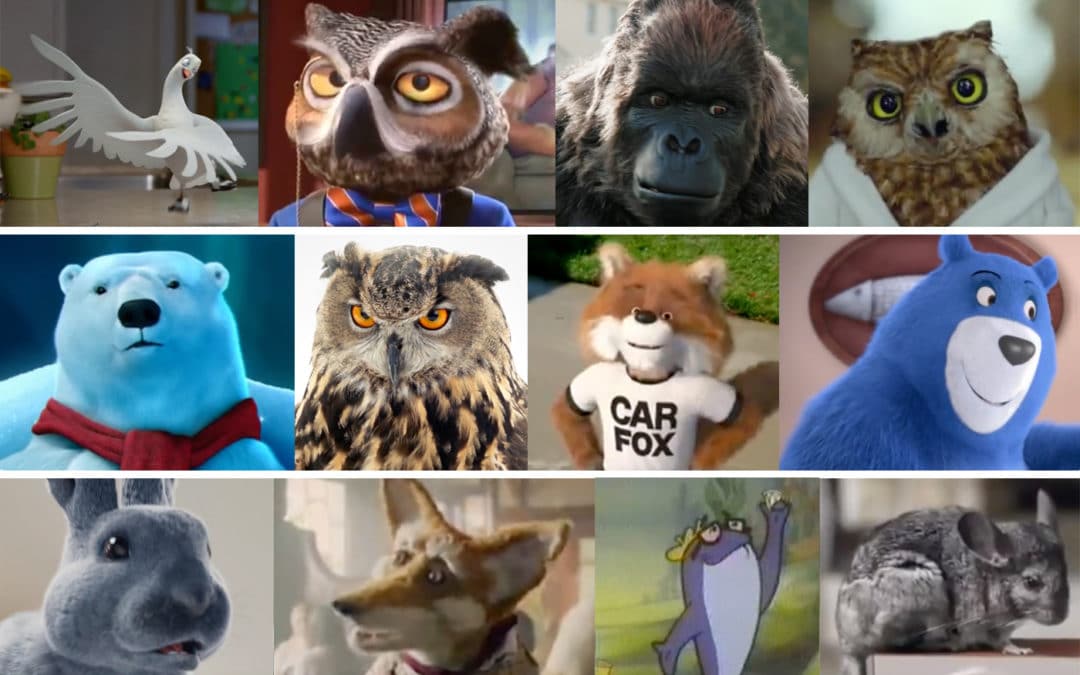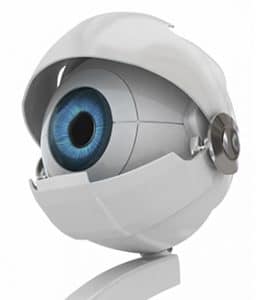Animal instinct: the low end of advertising
In the ad biz, we love to celebrate the best of the best.
What about the other ads? The not-so-fresh. The ones we see every day. Those that boldly go where everyone has been before. Don’t they deserve a little attention too?
Sadly, we can’t examine them all. So, in the interest of time, descend with me now into one small corner of this dark world: a place where animals do the selling.
Animal characters have existed since the dawn of advertising. At the risk of oversimplifying, these ads get produced because (a) the goal is winning people’s hearts, (b) people have a heart for animals, and (c) … logic!
In addition, animal characters come with excellent perks. They don’t need to be coddled on the set, they don’t squeeze you at contract time and they can’t be charged with unsavory crimes off-camera.
Whatever obstacles once existed in creating a talking animal have been all but erased by CGI—which explains why these creatures are reproducing at an ever-increasing rate (like rabbits?).
For the fun of it, here’s a sampling of today’s advertising animal acts, along with some observations.
Let’s start with CarFax, who has created the CarFox. The CarFox is not only a cheap animation, he’s the worst kind of spokes-animal—he simply says what a bad voiceover would have said in his place. “Boring like a fox” is not an expression.
What Bird’s Eye did is more of an inevitability than a creation. Once they felt that animal urge, all roads led to bird-dom. Clearly, “lovable” was the goal, though the result is more goofball and annoying.
Apparently, there is a fine line between advertising and ornithology. TripAdvisor was also seduced by the bird world, but went with the owl to convey wisdom. They even gave it a British accent, for an extra helping of smarts.
Two can play at that game. The good people at Xysal have their own spokes-owl, because wisdom is important in allergy relief as well. This owl goes all-out British with the accent (vaguely) and wardrobe.
Uh-oh. Things just got way complicated. There’s a third owl in town, thanks to Western Governors University. In fact, WGU out-owls them all, because their bird comes with a juvenile owl sidekick—and higher quality animation too.
Bears are always a crowd-pleaser. Ask Smokey. But how does one make the bear fresh again? Turn it blue, of course. Charmin’ is all over the blue bear thing—except on packaging, where brown bears rule.
Blue is also a good color for rabbits. Even more so when the company name is Blue Rabbit Ice Cream. These guys up their animal game with a nicely animated spokes-rabbit—then bring it right back down with stereotyped humor.
Moving on—in a discussion of animals in advertising, is it permissible to bring up characters based on animal parts? Or animal fluids?
If you subscribe to the idea that human beings are just another form of animal, you’ll be happy to find Mr. Bladder brought to life by the creatively named medication, Myrbetriq. Or enjoy Mr. Mucous from Mucinex. Surely Mr. Colon can’t be too far behind.
The character conundrum
Every so often, ad people create a character with that magic balance of personality and relevance (for its time), and long-lived campaigns are born. See two trailblazers in the bear category, Coca-Cola Bears and Smokey the Bear. And let us not forget Charlie the Tuna, the lone denizen of the deep in our little retrospective.
Suffice it to say, for every successful spokes-animal, there are a thousand disappointments.
With owl-like wisdom, many great creative directors put animal characters just below celebrity spokespeople on their “use only when necessary” list. In their thinking, going the animal route is the “easy way out.” Fresh, compelling imaginative concepts take far more work, but lead to far greater returns.
That said, it’s not unheard of for otherwise smart and/or creative people to push for the creation of a character.
While pitching a computer account at Ogilvy, I was once summoned to a one-on-one meeting with the legendary David Ogilvy himself. He implored me to invent a character that could become the core of our pitch. Another time, I was urged to do the same by the marketing people at Intel, who had an affection for (and history of) character-based advertising.
Advertising isn’t normally a life-or-death situation, but it does take a degree of bravery to resist the pressure to join the ranks of those who let an animal do the talking.
It’s far more satisfying to listen to the beast within—the creative drive to do something new.


Very funny, sadly, true. Also, how can we forget Lemmings . . . 😮
At Image Wild we encourage advertisers that use wildlife images to support conservation. In an ideal world, helping with wildlife conservation or research would be part of any such advertising campaign, and good for the business’ reputation as well.